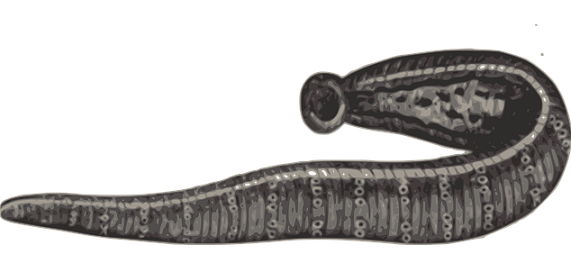Leeches are one of my favourite animals because they are so tough. When one latches on to your delicate skin, popular media suggest using fire, salt, medicated oil and a plethora of other substances to dislodge it. Salt does work but does anyone actually carry a vial of salt for a jungle trek? Fire should work but the leech will outlast the fire long after you cringe away from the heat. As for medicated oil, well, it is probably the most practical solution though personally, I make use of a different approach. More will be discussed about this approach in a future post.
A Living Classroom in a finger sized package
Do not mistake a leech as a brute latching on your skin, biting its way through and sucking its fill of your precious blood. It has been honed by evolution to overcome its prey’s defences with its biochemical arsenal. Within this finger sized package is an array of substances to numb us (or other higher animal) to its painful bite (anaesthetic) and prevent our blood from clotting (anticoagulant) as it feeds and digests on our blood.
To understand the elegance behind this creature, we have to understand biology – how pain is transmitted and felt and how clotting works. In this example, the interplay between biology and chemistry is inescapable. We have to understand chemistry (especially biochemistry) too as the mechanisms underlying the above biological processes are chemical in nature.
Leeches and the Ecosystem
Do not forget that leeches are part of the ecosystem too. The topic, Ecosystem is part of the syllabi for Primary Upper Block Science and Lower Secondary Science. Of particular interest is how leeches act as bioindicators of water quality in nature. A water body with only leeches and few other organisms is a sure sign of poor water quality likely impacted by pollution. You see, leeches are tough enough to survive in polluted waters in which other organisms simply cannot
Reality based learning of Science
In iMatter, we always believe that academic knowledge should be applied to and reinforced via real life examples. Leeches are one of these examples. Perhaps, in the process of learning about this fascinating creature, our students also develop less fear of it and greater appreciation of its survival abilities. Did we say that Science is everywhere?


Want to find out more?
- You (or your child) can join our Primary School Science, Secondary School Science, Chemistry (‘O’ levels, ‘A’ Levels) tuition classes.
- Or you can check out below the article I wrote for The Singapore Scientist about these wonderful creatures.
- Lastly, you can read my post on the field trip in which the leech specimen was collected. The field trip was conducted for a group of secondary school students.


